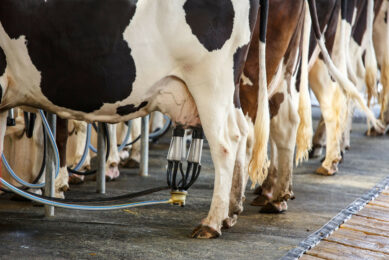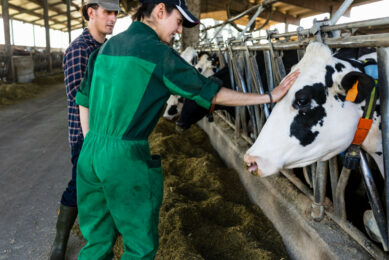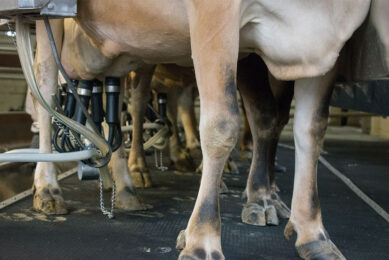Maintaining hoof health through nutrition
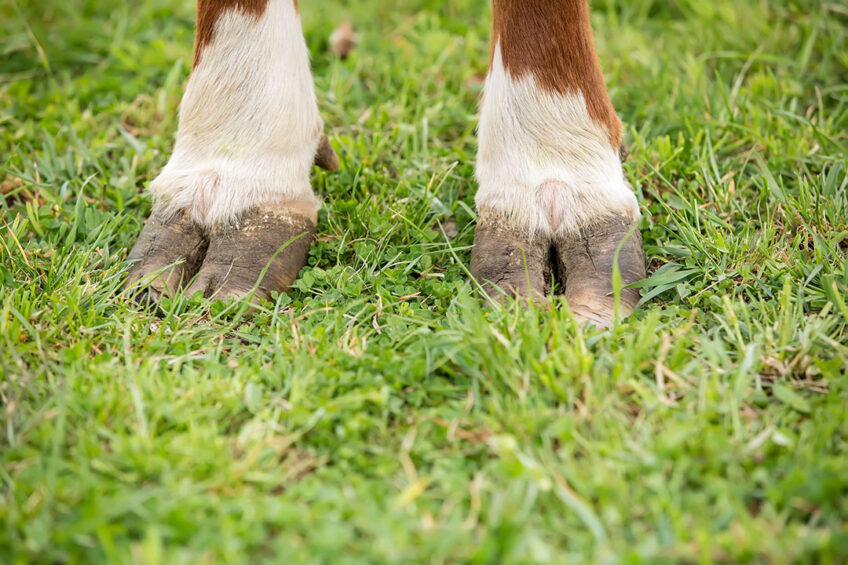
Hooves perform many functions, including supporting the weight of the animal, dissipating the energy impact as the hooves strike the ground or indoor surface, protecting the tissues and bone within the hoof capsule and providing traction for the animal.
Hoof health problems such as lameness, sole ulcer, digital dermatitis, foot rot, deep infection, and laminitis may adversely affect animal comfort and welfare. They also cause tremendous economic losses resulting from decreased milk production, decreased herd longevity, and impaired reproductive efficiency.
The following is a discussion of the nutritional strategies that help maintain foot health. Adopting other management practices can minimise losses and improve animal comfort, welfare, and production.
Dietary fibre
In one study, there was a significant increase in sole lesions 8-12 weeks after calving when the diet was changed suddenly from high to low fibre compared to feeding the same diet all the time. Diets too low in fibre also appear to be the primary cause of laminitis. Consumption of low levels of fibre results in rumen acidosis and the release of endotoxins. These endotoxins damage the blood vessels in the foot, and scar tissue starts to form in the claw.
Proteins and amino acids
It was found that higher protein content in the diet (19.8%) significantly increased the locomotion score and duration of lameness in dairy cows between 3 and 26 weeks after birth than feed with lower protein content (16.1%) and that high levels of rumen-degradable proteins increase the risk of lameness and laminitis.
The amino acids cysteine and methionine, which contain sulphur, are essential for promoting the structural and functional integrity of the hoof, as they are involved in the formation of a disulphide bond during keratinisation. With an inadequate supply of cysteine to methionine, the production of a softer hoof is induced. This problem may arise when feeding excessive amounts of maize silage and grain which have a low sulphur content. Optimising the diet to provide sufficient sulphur is, therefore, proposed.
Dietary fats
Associations between the fat layer of the heel and the nutritional status suggest that dietary lipid precursors, including lipids that formed from feed and those derived from short-chain fats, may affect lameness. The digital cushion may be more vulnerable if the cows are fed a low-fat diet or if antioxidants, such as vitamin E, have a lower concentration. Diets containing temperate grasses, such as ryegrass, fodder, and grain, have lower lipid content, which may pose a risk to hoof integrity.
Minerals
Mineral nutrition plays a vital role in hoof health. Calcium is required to activate the enzyme needed to form keratin and is also required for creating crosslinks between keratin fibres. Zinc is especially needed for cows with digital dermatitis infections or other lameness events as it forms an integral part of many enzyme systems responsible for maintaining foot health. Further, zinc is an essential mineral in the formation of keratin and also influences calcium use by the body. Zinc levels should be at least 40-50 mg/kg of diet dry matter.
Copper is an important part of collagen, the protein which forms the connective tissue in the foot, and is also critical for the formation of crosslinks in the keratin that keep the hoof strong and hard. Copper levels should be at least 15 mg/kg of diet dry matter and should be balanced with zinc because too much zinc prevents proper copper utilisation and storage in the cow’s body. It may also be necessary to feed higher levels of copper if molybdenum levels are high (greater than 3 mg/kg).
Vitamins
Vitamin D (jointly with vitamin A) plays a role in hoof growth and helps maintain a waterproof barrier on the outside of the hoof. Biotin, one of the B vitamins, is also important in hoof health. Providing 20 mg/day of supplemental biotin has been shown to cure sole ulcers quicker, reduce sole haemorrhages and reduce the incidence of inter-digital dermatitis. These vitamins are also involved in pathways that control and limit fat oxidative damage and may be important to hoof protection, health and integrity.
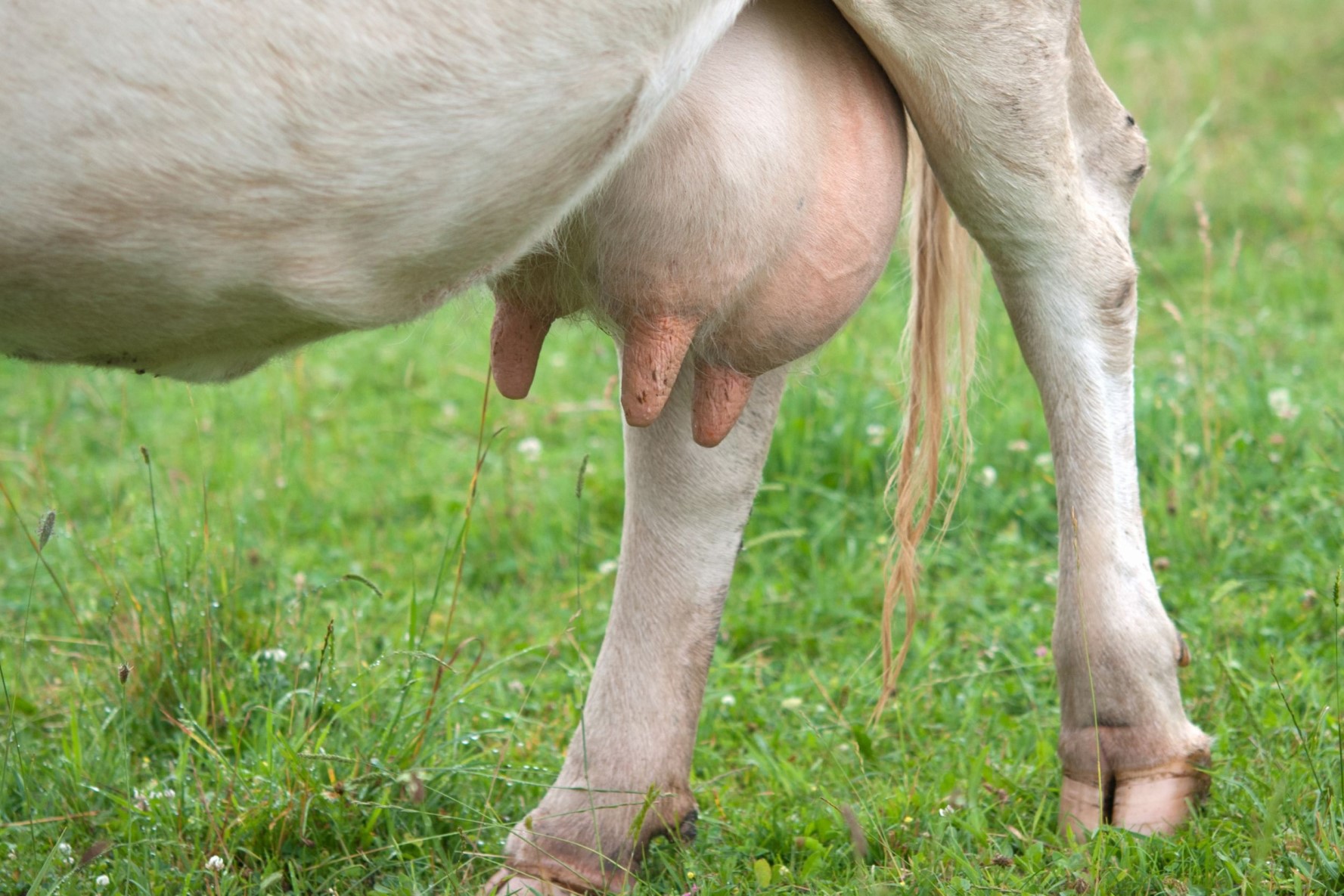
Concentrate feeding
Rapid increases in concentrates in the diet after calving increased the odds of digital dermatitis. Treponema, Ruminobacter, and Lachnospiraceae species were found in the rumen during the high-grain feeding period. This is significant because, after high grain feeding, the bacteria or toxins can travel from the digestive system to other parts of the body, including the cows’ hooves, resulting in digital dermatitis infections. Therefore, proper diet balancing and feed management are very important in maintaining rumen and hoof health.
Effect of mouldy feed
When rotten silage and mouldy feed are fed, histamine and other endotoxins are released into the blood, which can cause vasodilation, ultimately damaging the network of blood vessels in the hoof dermis. Subsequently, there is an insufficient supply of oxygen and amino acids that are necessary for the formation of the hoof tissues, which causes vasoconstriction, dilatation, laminar destruction, deterioration of hoof quality, and the process of laminitis develops.
Grazing management
- In 95% of cases, pasture may not contain sufficient amounts of elements such as copper and zinc, which are needed to maintain the immune function and hence prevent bacterial infection of the hooves. Supplementary feeding of these elements should, therefore, be considered.
- Susceptible animals should also be prevented from grazing tall fescue pastures because of the elevated level of the toxin ergovaline which causes lameness, swelling around the fetlocks, pain, and eventual loss of hooves caused by dry gangrene.
- Hoof infections are more common where pastures are on underlying clay than in sandy, chalky, or limestone areas. Constantly wet hooves become soft and more easily damaged.
- Muddy ground with flints or small stones is the most dangerous since flints penetrate the hoof and allow infection to enter. Susceptible animals should be prevented from grazing these pastures.
- Under poor vegetation conditions, cows must spend time walking to search for food, which causes changes in gait over time with resulting hoof damage. With good-quality pastures, cows can show rapid improvements in gait due to the relatively short time of grazing.
- Pastures with good vegetation also serve as soft bedding that allows the unrestricted movement of the animal. Such unrestricted movement helps improve blood circulation in the living tissue of the animal’s hooves, thus providing more protection for the hooves and increasing the ability of their outer edges to carry the bulk of the animal’s weight (60%) while walking.
References are available from the author on request.



